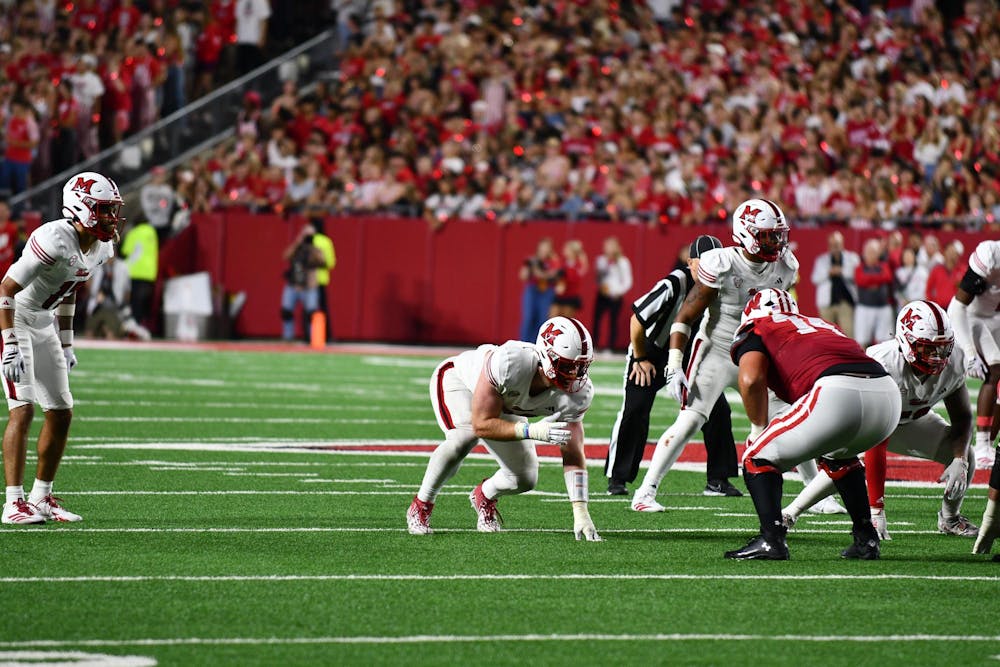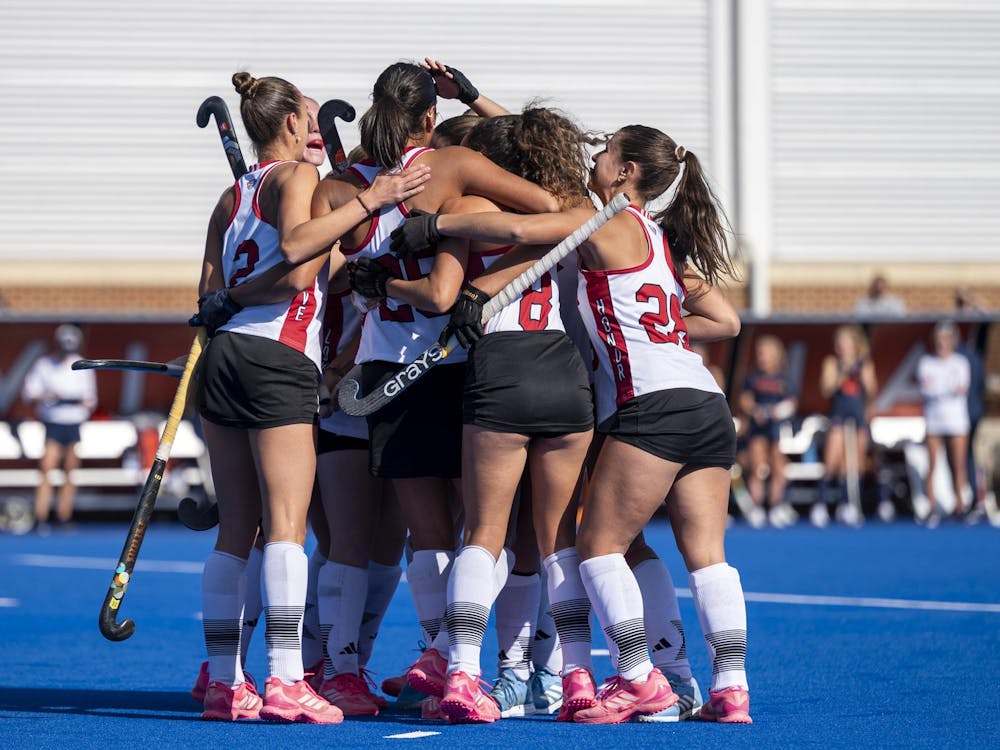The Miami University RedHawks football team lost its second game of the season against Rutgers University on Sept. 6.
Miami’s two losses, both on the road against Big Ten teams, come before the RedHawks’ home opener against the University of Nevada, Las Vegas (UNLV) on Sept. 20. The RedHawks’ performance so far reveals four main takeaways to note going into their next matchup.
Miami needs to stop shooting itself in the foot
The RedHawks kept their game against Rutgers close, trailing by seven halfway through the third quarter. The Scarlet Knights ran away with the game, but Miami didn’t do itself any favors, making multiple mistakes in the second half.
Throughout the game, Miami gave up 10 penalties for 94 yards. In comparison, Rutgers gave up two for 14 yards. The RedHawks’ errors came during crucial moments in the game, including a defensive holding on a third down in the red zone.
The team also gave up four defensive pass interference calls, which made it more difficult to get stops consistently.
A costly offensive pass interference call in the third quarter rendered a big gain worthless, leading to a Miami punt. Head coach Chuck Martin said these moments are small in a vacuum, but to be able to win games, these mistakes cannot pile up. Giving up nearly 100 yards for free puts the team in difficult situations in the long term.
Defensive struggles
Unlike last week, when the RedHawks held Wisconsin to 17, Miami’s defense gave up 45 points to Rutgers.
The Scarlet Knights’ quarterback Athan Kaliakmanis threw 26 completions on 36 attempts for 295 yards and four touchdowns. Kaliakmanis’ connection with Rutgers' two top receivers, Ian Strong and KJ Duff, was unstoppable, as the duo put up a combined 189 receiving yards and three touchdowns.
Throughout the game, the defense struggled to guard the receivers, which initially started as an issue of placement. The team played over-the-top, soft-man coverage, giving a 10-plus-yard cushion at certain points of the game, allowing the Scarlet Knights to run quick outs and hook routes along the numbers with little resistance.
As the game progressed, the RedHawks transitioned to a more aggressive press defense, which showed better results but led to the aforementioned defensive penalties. The corners were out-muscled against the bigger Big Ten receivers.
Enjoy what you're reading?
Signup for our newsletter
The offense continues to find its legs
The RedHawks’ offense played more comfortably compared to its week-one counterpart. Miami scored two touchdowns, had three big plays and averaged eight yards per play.
Two receivers – redshirt sophomore Keith Reynolds and redshirt junior Kam Perry – both had more than 100 yards in the air. It was the first time in six years that two Miami receivers had 100 yards or more in a game: Jalen Walker and Jack Sorenson did so against the University of Buffalo in 2019.
The offensive line gave sixth-year quarterback DeQuan Finn time in the pocket, allowing him to read the defense and allowing routes to develop further. If Miami becomes more consistent during practice, the RedHawks can showcase a strong offensive front against the Rebels on Sept. 20.




